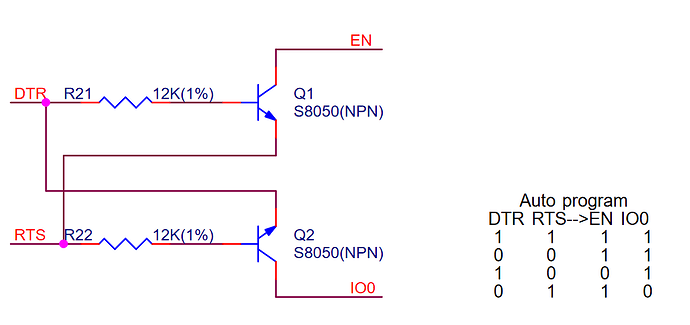So I’m doing my internship at a little entreprise in France, they manufactured some ESP32 cards to develop a ESP-MESH network. Our task is to program those cards, and PlatformIO IDE with VS Code was recommended to us to do so. So I was trying to carry out some examples. However I realised that while creating a new project, it is asked to select a card to which the project will be uploaded. But, this is a card that isn’t contained in the 1004+ cards supported/listed in PlatformIO.
It is a ESP32-WROOM-32 based card.
If some could help with this, that will take the risk to say that is a simple beginner doubt, I will be thanful to you. If you think the title is not appropriated, tell me so, I speak english, but sometimes is kind of hard for me to use the correct words
Pretty much all ESP32 dev boards with a WROOM-32 will work. The only difference that selecting a certain board does for the e.g. Arduino core is that it gives you different default pins. (Have a look at the different variants in the Arduino core and how little difference there is between them).
So really, you should try a normal “Espressif ESP32 Dev Module” (board = esp32dev) first, and it will very likely just work. You still of course have all the documented customization options available to fine-tune.
Thank you so much for that really fast response. I’m experiencing some problems while uploading to the ESP32 card some examples, so I was discarding possible reasons.
What exact examples, and what fails when uploading?
Last friday we were able to upload/flash some examples (just some projects with empty main.c files to test). The flashing problem was solved by just holding on the boot button and then pushing one time the reset button at the time of the flashing. Could anyone explain why this is necessary? Because this is the very first time I work with something similar, so I don’t understand what is the principle behind this.
About the examples, I will test this week and then let you know about it.
Thank you for such a fast response and for your always appreciated help.
Seems like your ESP32 board / card doesn’t have a auto-reset circuit built into it then? The flasher tool (esptool.py) expects to be able to do a reset-into-bootloader mode (that is, pull enable low, pull GPIO0 low, release enable) by using the USB-serial adapter’s DTR and RTS lines (which are usually used for flow-control) as controllable GPIO pins.
The exact expected circuit can e.g. be seen in any ESP32 dev board schematic (example).
So if you’d like to have the comfortable auto-reset / auto program behavior you need to check whether the cards has the above circuitry. If yes, then probably the DTR and RTS lines of the serial adapter (that are hopefully exposed) weren’t properly connected to the card. If it doesn’t have the circuitry, eithehr keep manually resetting the board into bootloader mode or use the two NPN transistors, two resistors and two capacitors per above to add the required circuitry, and connect your serial adapter to it. (The capacitors are also important).
So basically, the cart has to be in bootloader mode to flash programms into it? This is a weird behavior for me, seen that with Arduino, the only similar card with I have worked in all my life, you just compile and upload programms without manual need to put it in bootloader.
I can imagine, that’s because the arduino has integrated this auto reset / program to activate bootloader mode, or that such thing is not necessary in Arduino, any of these two reasons.
Thank you for those informations to make it automatic.
This is one of the ESP32 based cards, which also has the DTR and RTS pins:
I also have a USB to UART adapter, so I will test them together to see wether the automatic reset / program works. I just have to connect those pins to do so, am I right?
With standard Arduino (Unos) it’s also automatic, and also done via the RTS/DTR lines. See e.g. DTR in the Arduino Uno schematics. These boards also integrate the USB serial adapter on board so that users can just plug it in and program it. Also, the Arduino uno is preprogrammed with a bootloader Your board dosen’t have the chip on board so care must be taken to connect it properly for autoreset to work.
As far as I can see, yes. The reset circuitry is already there with Q1 and Q2 and related.


